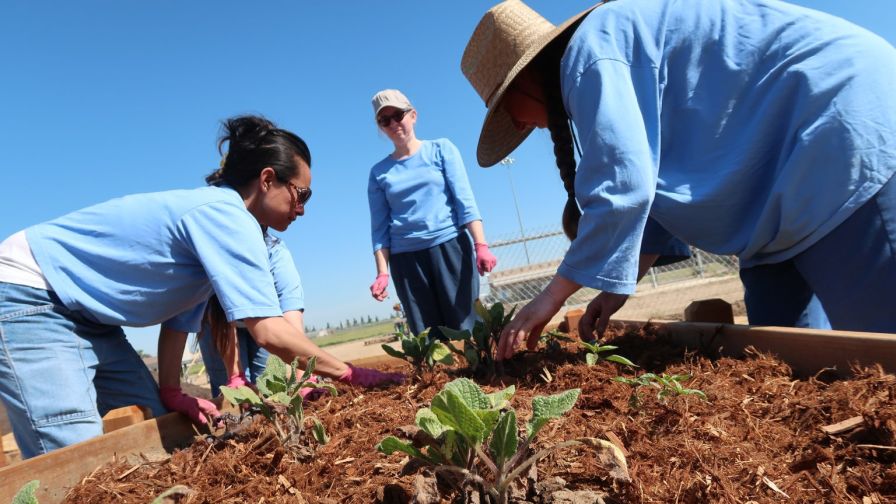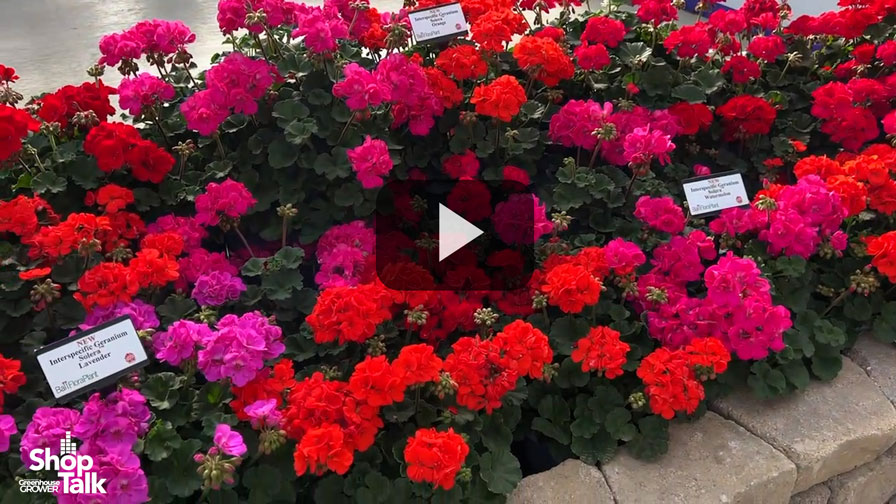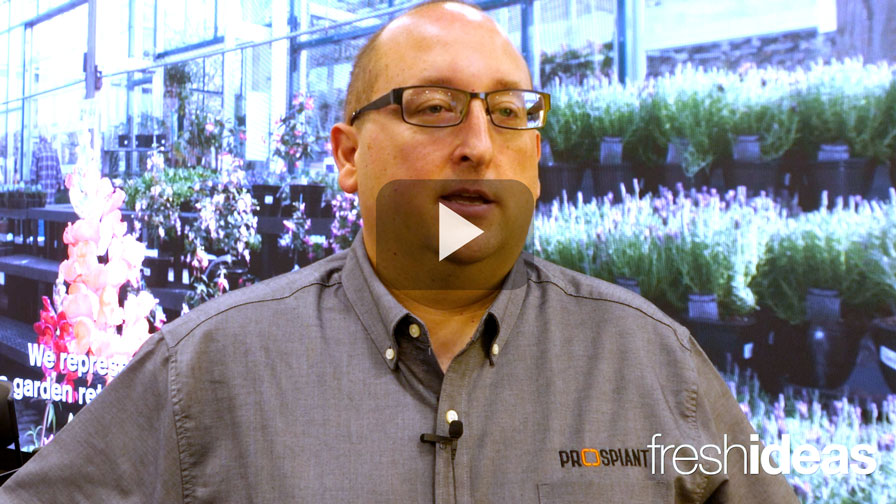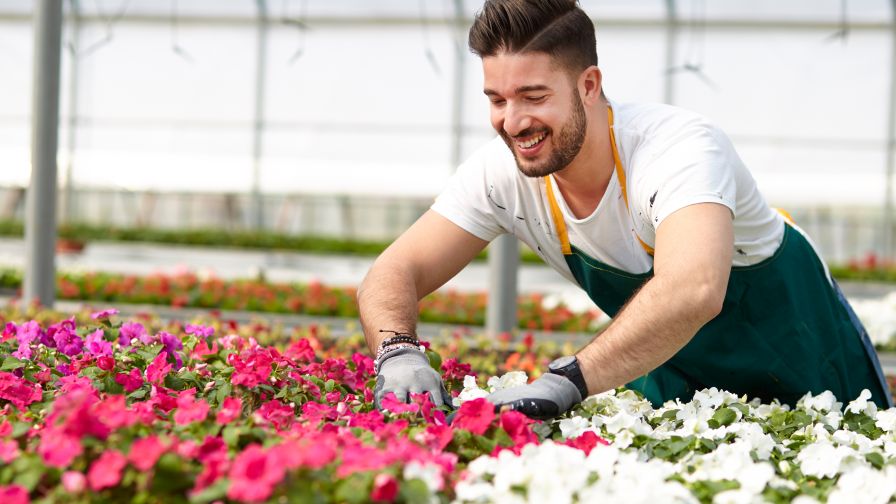Why Botany Lane Grows Poinsettias On Capillary Mats
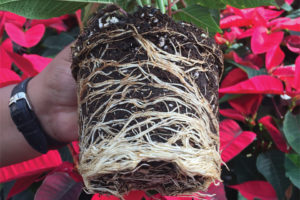
Watering or irrigation mats deliver water and nutrients from the bottom up, resulting in healthier root systems.
With poinsettia season still fresh on everyone’s mind, growers take this time to reflect on the past season and start thinking ahead to the next season. What went well this year? What were the challenges? Were there any pitfalls? What can be improved upon next year?
With ever-increasing price pressure and shrinking margins for such a commodity crop in an aggressive market, the ability to grow a top-quality product at a competitive price while still turning a profit becomes paramount. That’s what defines a great grower, especially if it involves identifying and implementing new opportunities. Denver, CO-based Botany Lane Greenhouse did just that for its most recent poinsettia season, and is happy to report great success.
“The biggest change that we implemented this year was switching a good amount of our poinsettia crop to being grown on capillary watering mats instead of using traditional drip irrigation,” says Daniel Ortega, Head Grower at Botany Lane. “This made a big difference in many areas of production and resulted in a better crop with significant savings in labor, water, fertilizer, and pesticide use, as well as shorter production times.”
For the 2016 poinsettia season, Botany Lane switched its entire 4-inch poinsettia crop to production on watering mats from WaterPulse, also a Denver, CO-based company with distribution in all of North America. The 4-inch crop amounted to about 24,000 plants. In addition, Botany Lane switched part of its 6-, 8-, and 10-inch crops to watering mats, totaling about 20% of its overall poinsettia crop. The company had trialed WaterPulse’s mats in the past with good success, which is why the 2016 expansion into using them for a larger percentage of the crop was a natural next step.
Irrigation Mats Take the Labor Out of Watering
“Working with the irrigation mats was easy,” Ortega says. “It’s quick to roll out the mats on the benches and place the plants on the mats. It’s a lot faster than having to place them on drip irrigation, which is not only time consuming, but also requires attention to detail to make sure the drip system is installed correctly and precisely.”
Also, growers need to check a drip system throughout the entire crop time to make sure the emitters are still working correctly, and when plants need spacing, readjusting the drip system is labor intensive. Irrigation mats eliminate both factors. One particular benefit of WaterPulse mats is that the surface they are installed on doesn’t have to be completely level. They are effective even if installed on a slope of up to 5%.
One of the biggest advantages of the irrigation mats was the daily watering process itself. Traditional overhead or drip irrigation requires skilled personnel to make sure the right amount of water is administered precisely to the plants. As every grower knows, uneven watering and especially overwatering is a greenhouse operation’s Achilles heel.
Capillary watering mats reduce labor costs not only due to the shorter amount of time needed, but also due to the lower skill level required. Plus, the actual water savings is significant as well, since there is no run-off and the plants take up exactly what they need. Water savings is a big plus, not only to the bottom line, but also toward running a more sustainable greenhouse operation, especially in drought-sensitive states.
Fertilizer and Pesticide Savings Have Hidden Benefits
While water and labor savings may seem to be obvious benefits of irrigation mats, savings in fertilizer and pesticides might not be as obvious.
“We were able to cut our fertilizer use by 60% to 70%,” Ortega says. “Since there is no run-off, pretty much 100% of the water and fertilizer mix is absorbed, resulting in zero waste. It requires precise injector dosage and close monitoring of the electrical conductivity (EC), which is well worth it, given the savings.”
Just like water savings, fertilizer savings result in much more than an improved bottom line, as no fertilizer run-off contributes to a more sustainable greenhouse operation.
But what about pesticides? How do watering mats affect their use? First, the plants are healthier overall and less stressed because uniform watering helps them develop a healthier root system, so they are less susceptible to problems with diseases and pests. Second, the foliage stays dry, resulting in fewer problems with diseases such as Botrytis. Third, watering mats create an improved greenhouse environment from the bottom up, because with no run-off, there is no pooling of water and soil on the floor. Therefore, there are far fewer problems with algae growth and no breeding ground for diseases and bugs.
“We had close to no problems with insects and diseases this year, which helped us save pesticide costs, eliminated labor costs due to nearly no need for pesticide applications, and created healthier conditions for our plants, workers, and the environment,” Ortega says.

Capillary watering mats, also referred to as watering mats or grower mats, use the capillary action of soil to deliver water from the ground up directly to the root zone where the plant absorbs water. This eliminates wet foliage and results in more uniform watering, so plants are healthier.
A Healthier Environment Improves Plant Quality in a Shorter Time
The geotextile layer in WaterPulse mats contains an antimicrobial that prevents odor and algae development and contributes to a better plant environment. Ortega says he noticed an improvement in general plant quality. Plants grown on the irrigation mats had a stronger root system and were healthier overall. Plant loss was reduced compared to previous years. Ortega says he estimates a total plant loss of 0.5% or even less. Botany Lane’s customers were happy to once again receive a superb crop (if anything, even better than in the past) without having to pay more for it.
The company’s customer base is comprised of box stores such as Safeway and Sprouts, some independent retailers, and some fundraising organizations. It is well known for producing top-quality plants, and this year’s poinsettia crop was no exception.
Last but not least, do capillary irrigation mats have any effect on crop production times? Ortega says he was able to shave a week to 10 days off the 4-inch crop time, which is a substantial savings in greenhouse operation costs. The company saw similar reductions in production times in its 6-, 8-, and 10-inch crops.
Looking Toward the Future
Because of its success with capillary watering mats, Botany Lane has plans to use them to grow other crops.
“We are currently growing and trialing several other crops on the mats and will definitely expand our production on the mats in 2017,” Ortega says. “We’ve seen great success with regal geranium propagation, which can be a challenge to root. I’ve noticed root development after 10 days if grown on the mats, compared to the traditional 15 to 17 days. We’ve also had less problems with Botrytis and larvae.”
Botany Lane is also trialing the mats on a variety of tropical plants such as tropical hibiscus and mandevilla, as well as spring crops. It is also working closely with the WaterPulse team to provide feedback and help in the development of new products and the fine-tuning of existing products.
“I am confident that expanding our production on the WaterPulse mats will work out very well,” Ortega says. “There is a lot of pressure on the industry; it’s getting tight. But there is also a lot of opportunity.”





